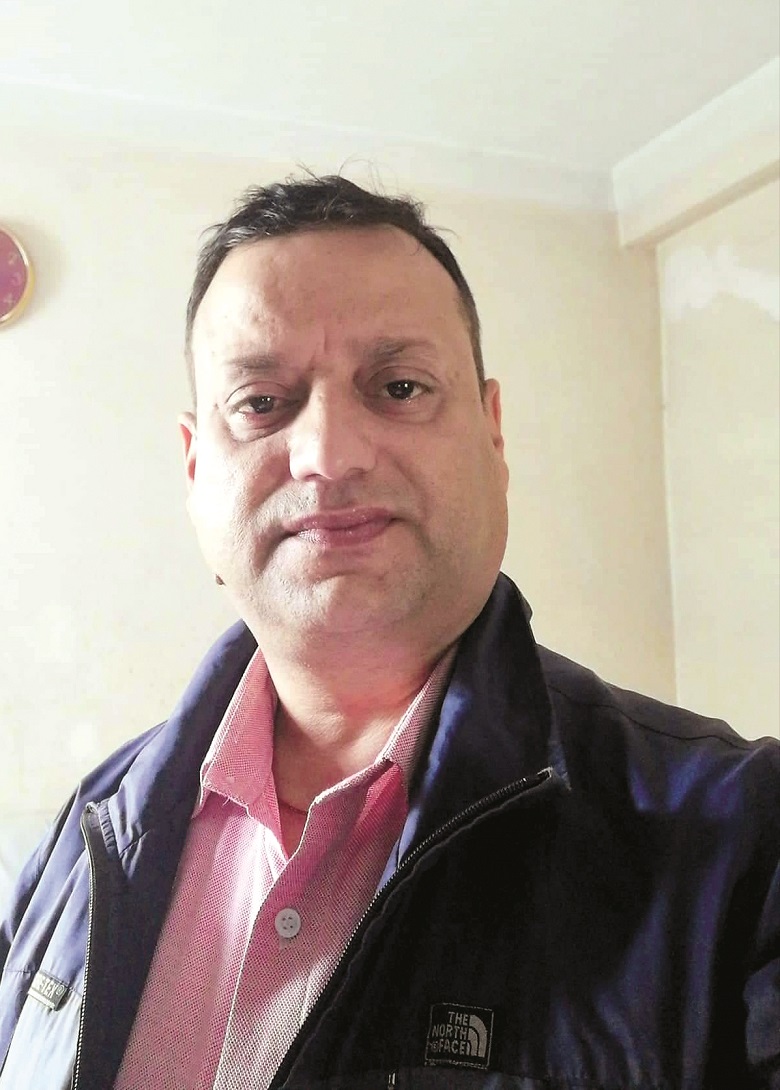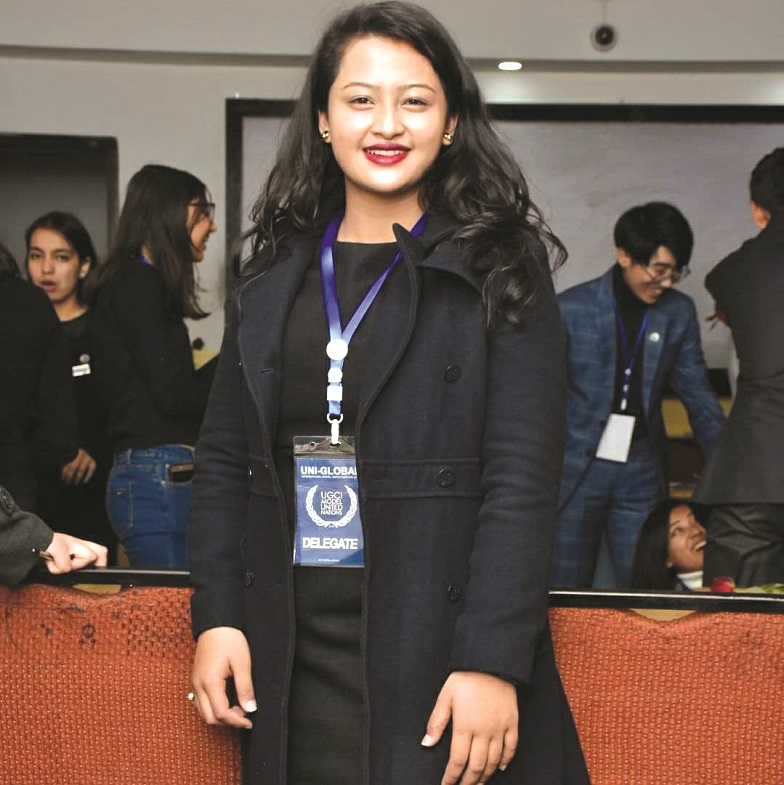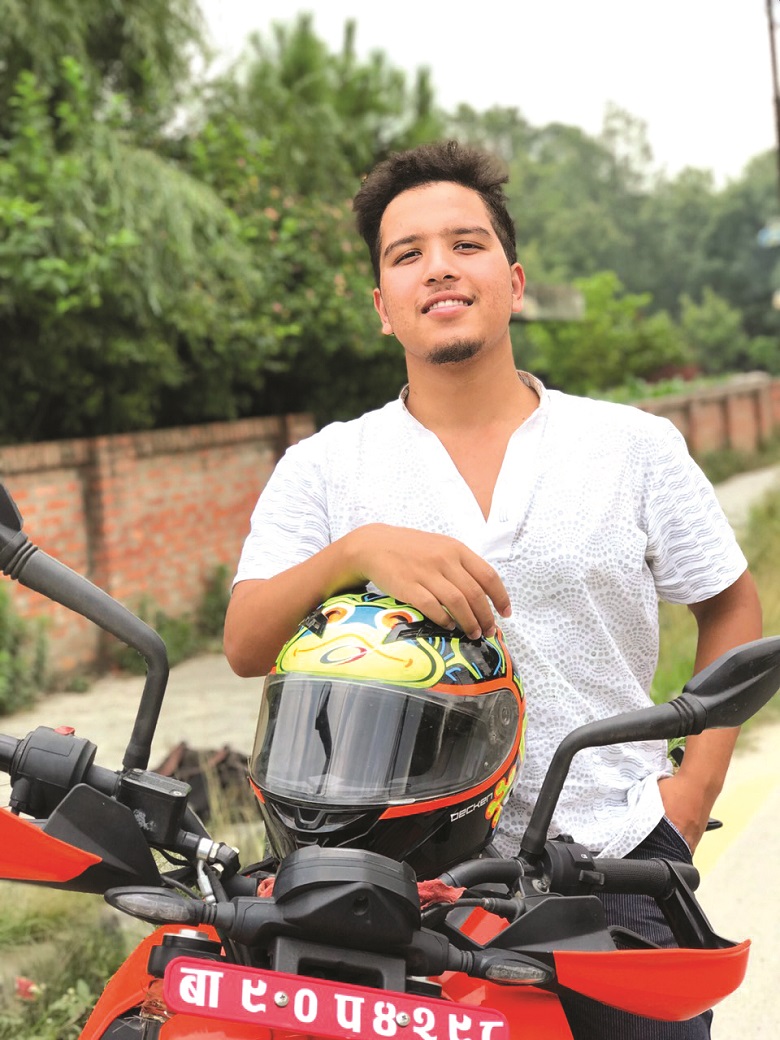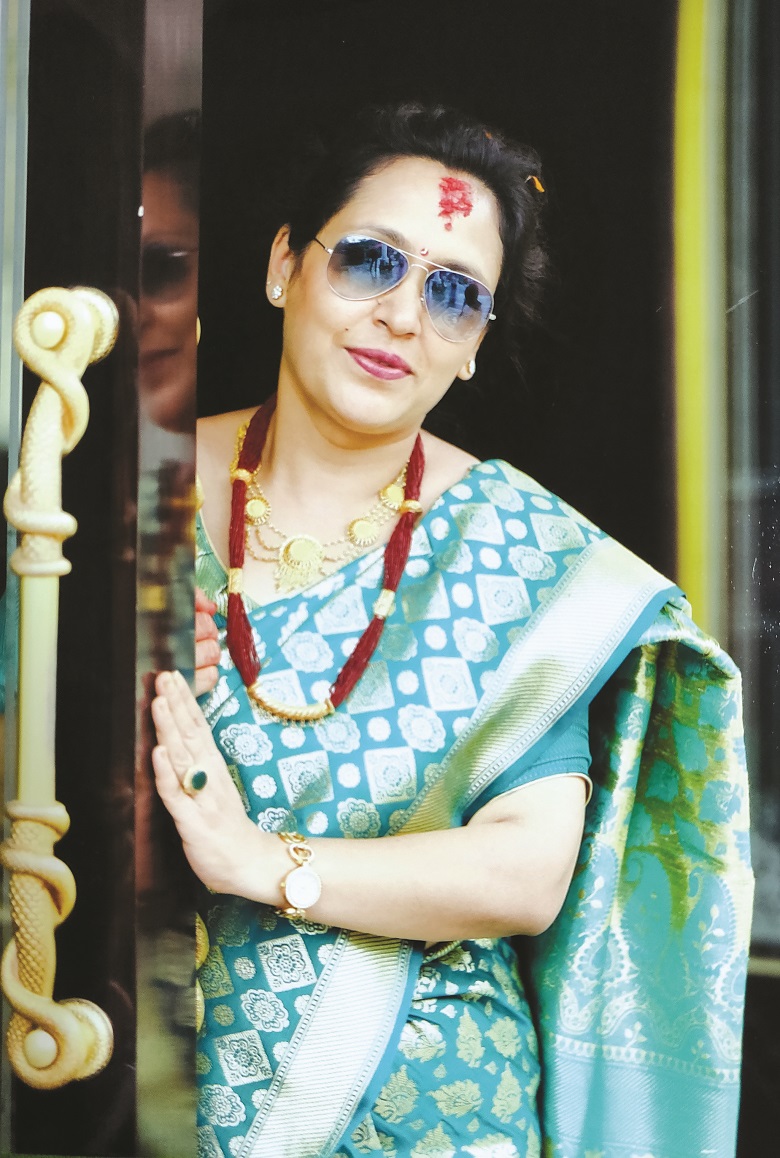Now trending
In the time before we all had smart phones, photography was an art. Sure, we probably had small cameras. But we recognized that the ‘professionals’ had better equipment, and had the eye and patience to set up a photograph and get the lighting right. Care was taken in every shot, love was put into every print. I know quite a number of these old-school photographers. Colin Baxter, the renowned photographer of Scottish landscapes, did contract photography for the company I worked for in Scotland. That was in the days before his own love of landscape and Scottish scenes grew into postcards, calendars, posters, and books for which he is now known around the world. Jill Gocher is a Bali-based Australian photographer. Having lived in Nepal in the early 2000s her passion then was Tibet and Tibetan faces. I have three of her photographs hanging on my wall. All featuring Tibetan nomads.
I just found out this month that the photographer, Iain Macmillian, who shot the cover of the famous Abby Road Beatles album, was from my hometown of Carnoustie, Scotland. I didn’t know him but think that deserves a mention here! And there are the fantastic photographers in Nepal. These include (late) Juju Bhai Dhakhwa whose work in the 1960s was mainly of friends, family and neighbors around his home in Nagbahal, Patan. A time capsule of life in that era. Then of course there is Mani Lama who has been a photographer in Nepal for more than 40 years and winner of various awards.
But it’s not these photographers I want to talk of today. I want to talk about YOU. You, the ‘professional’ (who is getting paid) and you, the wannabe professional, and you, the Facebook and Instagram posters. The photographers of the past, and those who still work with respect for the subject, are unobtrusive; knowing the best shots are often candid. And with the knowledge they are there to record the fact, event or scene, do not prevent others from enjoying the same! The modern ‘photographer’ by contrast seems to think he has exclusive right to any event happening.
Yes, he (usually a he) has been paid by the organizer to take photographs or film of the event. But in doing so he does not seem to apply any common sense and realize that while he is a paid part of the organizing team, the audience has paid (or given their time) for the privilege to be there as a guest. What happened to the saying “guest is god”? As the guest, or audience, I have a really hard time understanding why the photographer/videographer needs to be right in front of the stage at all times.
Last year at an open air event in Boudha, at one point there were three film crews (I think local TV channels) ON the stage. At the same time! We the paying audience could not see the performers for the cameras! Why not, since you know you are going to be covering an event, check out the place beforehand and work out where you can get the best shots while not blocking what the audience has come to see. Which is definitely not you!
Then I come to Instagrammers. There are now at beauty spots around the world signs telling us where to stand for the best selfie. It’s hilarious that pictures of marvellous landscapes show nature at its best, while on the other side of the camera are dozens of wannabes waiting their turn. Or worse still, features are added. Look up Penataran Lempuyang (Gates of Heaven) Temple in Bali. No lake there. But mirror like water is added, I assume on an app, to give the gates their supposedly more photogenic appearance.
So, in brief, because I could say more, be considerate when taking photographs and pleeeaase, ancient architecture needs no app to make it look stunning!
Are you up for intermittent fasting?
We complain about the size of our waist, the fat in our belly, about feeling lousy and sleepy the entire afternoon while simultaneously munching on a packet of chips or chocolates. “I cannot diet but I want to lose weight” has become a familiar refrain. Our hectic lifestyle leaves us with little time for thinking carefully about the food we eat and its nutritional value. But the problem is that one cannot have a good physique while binge eating at the same time. Regular exercise, yoga, meditation, and a sensible eating habit contribute to a good figure and health.
For those who cannot stick to various diets (Keto, low-carb, vegan and what not), intermittent fasting could be an ideal way to lose weight and get the body you want. It isn’t very complex, and can easily fit into your work schedule.
Healthline.com defines intermittent fasting as “an eating pattern where you cycle between periods of eating and fasting. It does not say anything about which foods to eat, but rather when you should eat them.” It is a dietary method that is widely practiced in the western world and has recently started gaining recognition in Nepal. Four individuals who have tried it shared their views on the entire process and their journey to weight loss.
Age an important factor

Suraj Subedi, 43 years, Managing Director at Samriddhi Trading Enterprises
The first thing that came to my mind when I realized my bulging tummy did not let me wear my old clothes was that I needed to start dieting. But being a Nepali and having little self-control over spicy and tangy food, I couldn’t keep up with any other diet routine and decided on intermittent fasting. I practiced it for about two months during which I also jogged daily. But the results were a bit disappointing. I’m not going to lie—that may be due to my inconsistency and some days when I cheated.
But then I also think age was an important factor. Had I done it in my early 20s, I think the results would have been much better. My 10 am to 6 pm eating schedule did help me lose some 3-4 kg in three months, but I wasn’t satisfied enough to carry on with it.
Recommend it to everyone

Spriti Shakya, 19 years, Student
I have been following intermittent fasting for about two months now. My routine is simple; I eat between 10 am to 6 pm. I’ve lost about six kg and I’m quite happy with the result. Since it has worked for me, I’d recommend it to everyone. It limits people’s calorie consumption and helps them build a healthy eating habit. It’s not very difficult to adopt, with just a slight change of an hour or two in the regular Nepali meal routine. I plan to continue with it for better results.
Inconvenient and inflexible

Sakshyam KC, 17 years, Student
I practiced intermittent fasting for about six months. I was extremely fat. No, I wouldn’t call it healthy. I thought it was high time I did something about it. That’s when I started my intermittent diet. I would take a cup of black coffee without sugar at six in the morning and then eat lunch at 1. That was my only calorie intake for the entire day. I did lose 25 kg, but the weakness and dizziness I felt are a different story. I wouldn’t recommend this schedule to anyone because it’s inconvenient and inflexible.
Not up to expectation

Jyoti Shrestha Manandhar, 45 years, Freelance interior designer
My husband and I started intermittent fasting together, but the results were different. Maybe I did not stick to it as firmly as he did. My eating schedule was limited to an eight-hour window during a single day. The results weren’t quite up to my expectations but I did lose some 4 to 5 kg in three months. My husband lost as many kilograms in just one month. It was not very difficult for me as I did not have to make too many changes in my eating habit, but other practitioners might find it harder. Yes intermittent fasting can be an effective way to reduce weight, although it might take quite a long time.
These conversations with people of different ages and sexes raise as many questions about the effectiveness of intermittent fasting as they answer. In order to help me understand it better, I talked to Dr Binita Panta, a certified nutritionist and a dietitian who works at Alka Hospital in Lalitpur.

Dr Binita Panta, Nutritionist and a dietitian, Alka Hospital
“I’ve read a couple of articles on intermittent fasting and tried to write one myself. I wanted to base my observation on at least 10 to 15 participants, but the number of Nepali patients willing to try it is minimal. I could only convince one patient to try intermittent fasting, but even he left it mid-way because it was inconvenient for him,” she said.
Dr Panta added that the patient was successful in reducing his blood sugar level without the use of additional medication. But the patient complained that he felt weak during some hours, which the doctor thinks could be psychological.
Dr Panta stressed that in spite of some benefits that intermittent fasting offers, regular exercise and a balanced diet are the key to healthy metabolism and weight maintenance. “I used to run a slimming center and we encouraged members to eat a healthy diet. They got all the nutrients they needed from 1,400 calories a day and did an hour of Zumba dance. This method yielded excellent results, with some people losing up to 10kg in a month.”
According to the doctor, differences in the results of intermittent fasting are accounted for by people’s age and metabolism. People with diseases like diabetes, Polycystic Ovarian Syndrome and hypothyroidism already have low metabolism. Hence it’s very difficult for them to burn body fat and convert it into carbohydrates. In such cases, practicing intermittent fasting can lead to further complications in metabolism, leading to hyperglycemia. As such, these types of fasting are only beneficial to young people without medical issues. So before you begin a new diet regime such as intermittent fasting, you might want to consult a physician or a dietitian. Happy eating!
A classical singer who redefines the genre
“Ididn’t even know I could sing when I was in class 7, a friend of mine played a prank on me and raised my hand when the students at my school were being called for an audition for a district-level inter-school music competition,” recalls singer Shiva Pariyar. “I was then forced to go to the front of the class and sing in front of my teacher and friends. I remember I sang “Ma ta aba risaunchhu boldai boldina” by Kumar Sanu and the teacher was so impressed that he selected me for the competition.” The rest is history. From a school boy who did not know his own talents to an aspiring singer who wanted to settle in life as a music teacher to one of the highest grossing singers in the country, Pariyar has had a rollercoaster ride. The 37-year-old singer who was born and brought up in Sarlahi has set himself apart from the singers of his genre by continuously exploring and experimenting with new sounds.
A devout student of classical music, Pariyar, even in his early stages in the music industry, learnt to read the audience’s mind and infused his knowledge of classical music with the more contemporary ‘modern Nepali’, folk and electronic music to create hits like “Kya Daami Bho” and “Pilayo Saathi Le”, among others. As a result, he has become a household name in the country.
Pariyar comes from a family of lower-middle class farmers in Sarlahi and he is not shy to talk about the hardships of his roots. The world of showbiz and glamor is new for the singer from a small village where a life like this was never even dreamt of. “My family always had enough to feed me and my three sisters. But we never had money to spend on luxuries, not even school picnics,” he says. “Never had I thought I’d become a professional singer.” After winning a few competitions in his district, Pariyar got an opportunity to participate in a national level competition. That’s when he realized he could make a comfortable living with a career in music. But his parents were against the idea because of financial reasons.
So when he was around 16, he ran away from home to Kathmandu to explore the possibilities in music. He worked as a laborer in a paper carton factory to support himself. After struggling for a couple of years, he went back home. By then the family had accepted his choice, and he managed to convince them to support him for two years in Kathmandu while he learnt music. Pariyar enrolled in the Lalit Kala Campus in 2000 as a music student and also took private lessons from Rabinlal Shrestha and Chandan Kumar Shrestha. He also got a job as a music teacher at a local school and was satisfied with the position for a while. “My highest goal then was to make a living out of music and being a school teacher seemed to be the best option at the time,” Pariyar says.
But then he was struck by the thought of creating music that people would remember him for. Realizing that the audience for classical music was small at the time, he decided to make a ‘modern Nepali’ album. He spent around Rs 300,000 in the studios but the album was never released. “By the time I completed the album, I realized that it had no market at all,” Pariyar says, “What was I to do? My family had supported my dream for so long and that amount was very huge for them. It took me a few years to pay it back.”
The breakthrough for Pariyar came only in 2005 when he finally managed to release his debut album ‘Mokshya’. The album as a whole did not fare so well but a single from it—“Fewa taal maa saili”—a folk-based song earned him the recognition of a promising singer in the industry.
That was when Pariyar decided he would not let a single genre decide his musical career. Pariyar kept up with the times and studied contemporary music on his own to find out what the modern audience wanted. This helped him produce a total of 10 successful albums so far in multiple genres like pop, ‘modern Nepali’, ghazal and classical. From easy-on-the-ear melodious songs to techno and club influenced dance numbers, Pariyar’s repertoire has it all. In his career of almost 15 years, he has managed to win the highest awards for any Nepali musician—namely the glorious Narayan Gopal Yuva Sangeet Puraskaar (2013) and the Rashtriya Yuva Pratibha Samman (2016).
Pariyar is also one of the busiest touring artists in the country who has travelled to Australia, Japan, Germany, Spain, Portugal and Norway among other countries to perform his music. Pariyar is currently preparing for a double album—his 11th and 12th— titled Shivalaya Part 1 and 2. “Shivalaya 1 will be a thematic album,” he says. “I will be mixing my folk-based compositions with techno music to give continuity in listening to the whole album. I hope this experiment works.”
Strength through self-defense
Self-defense is an important skill, more so for people with disabilities. Various studies have shown that people with disabilities are more likely to experience violence and abuse than those without any physical limitations. Enter ‘Fightback’, a sexual violence risk-reduction education program that aims to build safety skills.
Since 2013, Fightback has been providing physical, psychological and oral trainings to people with disabilities. The sessions are conducted at educational institutions, NGOs, INGOs and corporate offices, and anyone between the ages of 12 to 60 can participate.
Bhawana Shrestha, marketing manager at Fightback, says the goal is to empower people and enable them to protect themselves from danger. Right now, those who want to get the training have to arrange the training location themselves.
Uddab Thapa Magar, chief self-defense instructor and second director at Fightback, has a team of martial arts student and national level Taekwondo players to help him with the training sessions. He says that among those with disabilities, it’s most difficult to teach self-defense to the visually impaired.
“In that case, you have to mostly rely on verbal instructions. You can tell them what needs to be done, but it’s not 100 percent effective,” says Magar. Nonetheless, the trainers at Fightback develop programs such that participants are able to by and large remember what they are taught.
Magar adds that people with different disabilities are trained separately to avoid confusions. This, he explains, is because what is a challenging task for one isn’t so for another. So, deaf people are given an interpreter, those with paralysis are taught how to use their immobile limbs as weapons when
in danger, etc.
The trainings are usually three to five days long and conducted for eight hours a day, starting with an ice-breaking session. In the ice-breaking session, the participants sing, tell stories and act in order to create a causal vibe.
“We want them to be comfortable with us. They shouldn’t hesitate to ask questions and share their problems during the trainings,” she says, adding that this ensures they are better able to grasp the teaching. These ice-breaking activities, Shrestha says, are customized according to group needs.
At the beginning, those with disabilities are also taught ways to recognize an attacker and to retaliate. Even blind people realize when someone is following them when they are alone, says Magar. “We teach them that if they are in such a situation, they should shout “ko ho?” (Who is there?). If someone holds their hands and tries to pull them, they should shout “chod” (Leave) while also doing some physical moves,” he explains. Likewise, those who can see but have other disabilities should shout “stop” loudly, and mul-tiple times. He says it’s important to appear confident and powerful before an attacker.
Before the training, the team meets and discusses the best ways to teach self-defense to that particular group. Though the aim is to teach partici-pants how to avoid being physically abused, retaliate and fight the abuser, Shrestha says the participants are also mentally prepared to know and avoid situations where they can be sexually abused, and to stay alert.
“The problem is that most peo-ple don’t even know when they are being sexually harassed or abused. We teach them to see the signs,” says Shrestha.Additionally, the trainings include talks about intuition skills, critical thinking, communication skills, fear and stress management, and online harassment.
Shrestha mentions that since 2013 the center’s curriculum has changed quite a bit with constant feedback from the participants. And they are expanding. Last year, they conducted training sessions in 12 districts of Nepal.



















